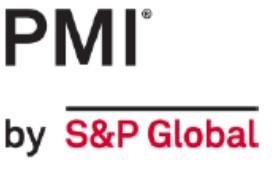The Global Purchasing Managers’ Index (PMI) for manufacturing produced by J P Morgan using the data from S&P Global was exactly on the neutral reading of 50.0 with output rising for the first time in seven months thanks to easing of supply chain constraints and the post-Covid re-opening in China. The overall balance in the index was a combination of an increase in output and employment balanced by slower rates of decline in orders and stocks of purchases. For output, there was solid growth in the consumer and investment goods sectors with a continued downturn for makers of intermediate goods.
The UK saw an improvement from the January reading but remained below the crucial 50 level – however, the PMI of 49.3 is the best since it slipped into negative territory in August 2022. There was a small rise in the output element of the index for the first time in 8 months – as with the global trend, the consumer and investment goods sub-sectors saw growth while intermediate goods are still seeing a fall. While there was a ninth consecutive fall in orders, this was the smallest in magnitude in this series. Suppliers’ delivery times shortened for the first time since June 2019 (although concentrated in the intermediate goods sub-sector) – this had a negative impact on the overall PMI.
In contrast to the UK and global PMI trend, the Euro-zone saw a weakening of the already negative manufacturing PMI although there is a mix of trends among the eight countries in this region. There were significant improvements compared to January in Greece, Spain, Italy and Ireland (in order of the magnitude of improvement) with these countries having PMI readings above 50. The other 4 countries – France, Austria, Germany and Netherlands – all saw a deterioration and were in negative territory. Across the region, output stabilised ending an 8-month sequence of contraction but the index for the Euro-zone was dragged down by the components for suppliers’ delivery times and stocks of purchases. New orders fell for the 10th consecutive month with a quicker decline in new export orders in February.
Among the other EU countries who have a PMI survey, Poland saw an improvement compared to January, there was no change for Sweden and the PMI slipped a little in the Czech Republic but all three remained below 50; on the other hand, Hungary saw an improvement in its already strongly positive PMI reading. For the non-EU countries, the manufacturing PMI for Turkey was unchanged at 50.1 but slipped further into negative territory for Switzerland.
There was a similar mix of trends in Asia; there was a strong increase in Taiwan but the reading remained below 50 while a smaller but still significant increase for China moved them into positive territory for the first time since July 2022. There was a small improvement in the already positive reading for the ASEAN group of countries while the negative reading in South Korea was unchanged. The strong positive reading in India edged down very slightly but Japan saw its negative reading deteriorate further.
Finally, all four of the countries in the Americas had a higher PMI than in January which moved Mexico back above 50 but the USA and Brazil are still in negative territory; Canada improved its already positive PMI.
Across the 27 countries/regions that we cover in this analysis (excluding the global total), 12 have manufacturing PMI’s above 50 which is an improvement on January which only had 9 in this position. The highest PMI this month was in Hungary and the lowest was in the Czech Republic; compared to January, the biggest improvement in the manufacturing PMI was in Taiwan while the largest fall was in France.
The individual S&P Global PMI reports are available to download on their web-site at https://www.pmi.spglobal.com/Public/Release/PressReleases but we also have a summary charts report which is available to download below. You should note that the PMI readings for Hungary, Sweden and Switzerland are not compiled by S&P Global but can be found with an appropriate internet search (it also means that they are not part of the global PMI calculation)
| Attachment | Size |
|---|---|
| PMI Report – February 2023.pdf | 99.62 KB |

